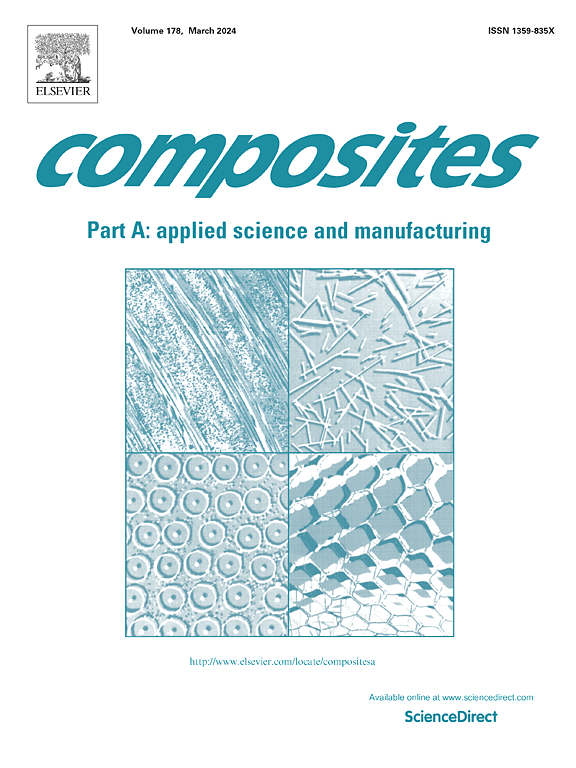Cellulose nanofibrils enhanced UV curable ferromagnetic resin for 3D printing of magnetoactive soft materials
IF 8.1
2区 材料科学
Q1 ENGINEERING, MANUFACTURING
Composites Part A: Applied Science and Manufacturing
Pub Date : 2025-04-23
DOI:10.1016/j.compositesa.2025.108965
引用次数: 0
Abstract
3D printing technology enables the efficient fabrication of complex microstructures, significantly benefiting applications in soft robotics. 3D printing technology efficiently fabricates complex microstructures, particularly benefiting applications in soft robotics. Integrates active materials into 3D printing resins enabling responses to external stimuli especially to magnetic fields. In this study, we introduce cellulose nanofibrils as a rheology modifier in ferromagnetic 3D printing resins, providing a novel approach to enhancing actuation performance. The incorporation of cellulose nanofibrils maintains settlement inhibition and restricts shear modulus increase, thereby preserving the resin’s intrinsic properties and offering improved control over rheological characteristics. The addition of cellulose nanofibrils to ferromagnetic 3D printing resins retains essential properties such as tensile strength, shear modulus, and magnetization, ensuring the functionality of the material in soft robotic applications without compromising its inherent qualities. This research advances the understanding of the impact of rheology modifiers on the performance of ferromagnetic 3D printed material. Furthermore, this study enhances magneto-mechanical actuation and provides a new perspective on the fabrication of high-performance ferromagnetic 3D printed robots.
用于3D打印磁活性软材料的纤维素纳米纤维增强紫外固化铁磁树脂
3D打印技术能够高效地制造复杂的微结构,极大地有利于软机器人的应用。3D打印技术可以有效地制造复杂的微结构,尤其有利于软机器人的应用。将活性材料集成到3D打印树脂中,使其能够响应外部刺激,特别是磁场。在这项研究中,我们将纤维素纳米原纤维作为流变改性剂引入到铁磁3D打印树脂中,提供了一种提高驱动性能的新方法。纤维素纳米原纤维的掺入保持了沉降抑制作用,限制了剪切模量的增加,从而保持了树脂的固有特性,并提供了对流变特性的更好控制。在铁磁3D打印树脂中添加纤维素纳米纤维,保留了拉伸强度、剪切模量和磁化等基本特性,确保了材料在软机器人应用中的功能,同时又不影响其固有质量。本研究促进了对流变改性剂对铁磁3D打印材料性能影响的理解。此外,该研究增强了磁机械驱动,为高性能铁磁3D打印机器人的制造提供了新的视角。
本文章由计算机程序翻译,如有差异,请以英文原文为准。
求助全文
约1分钟内获得全文
求助全文
来源期刊

Composites Part A: Applied Science and Manufacturing
工程技术-材料科学:复合
CiteScore
15.20
自引率
5.70%
发文量
492
审稿时长
30 days
期刊介绍:
Composites Part A: Applied Science and Manufacturing is a comprehensive journal that publishes original research papers, review articles, case studies, short communications, and letters covering various aspects of composite materials science and technology. This includes fibrous and particulate reinforcements in polymeric, metallic, and ceramic matrices, as well as 'natural' composites like wood and biological materials. The journal addresses topics such as properties, design, and manufacture of reinforcing fibers and particles, novel architectures and concepts, multifunctional composites, advancements in fabrication and processing, manufacturing science, process modeling, experimental mechanics, microstructural characterization, interfaces, prediction and measurement of mechanical, physical, and chemical behavior, and performance in service. Additionally, articles on economic and commercial aspects, design, and case studies are welcomed. All submissions undergo rigorous peer review to ensure they contribute significantly and innovatively, maintaining high standards for content and presentation. The editorial team aims to expedite the review process for prompt publication.
 求助内容:
求助内容: 应助结果提醒方式:
应助结果提醒方式:


